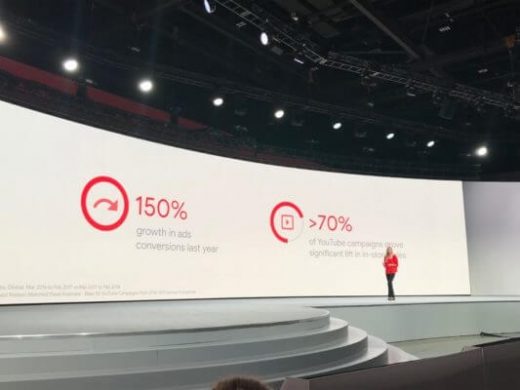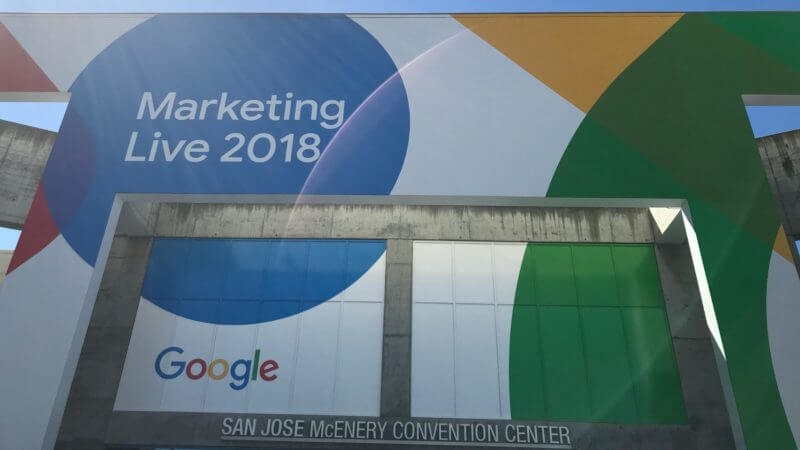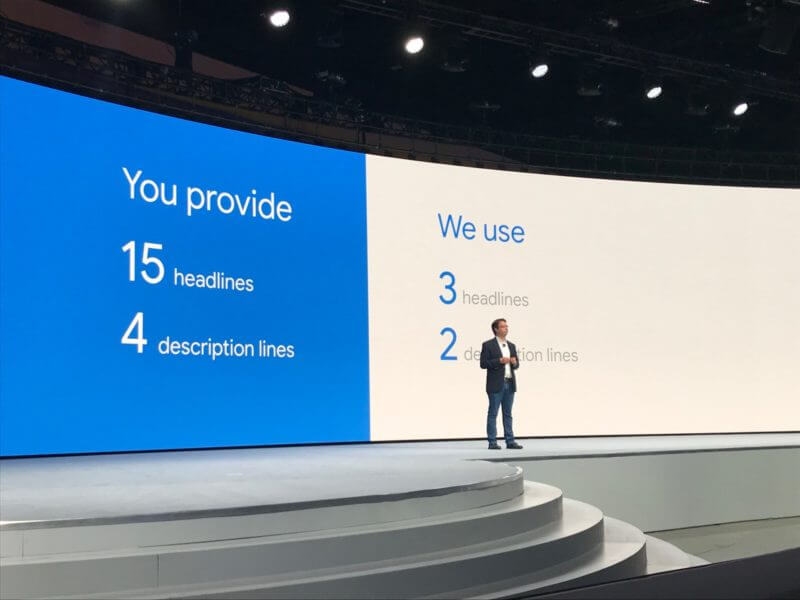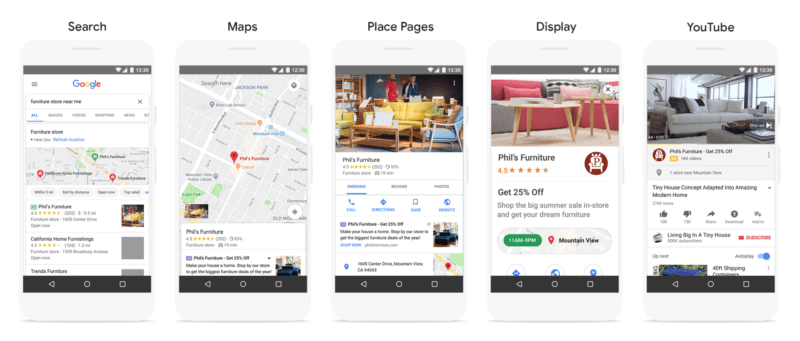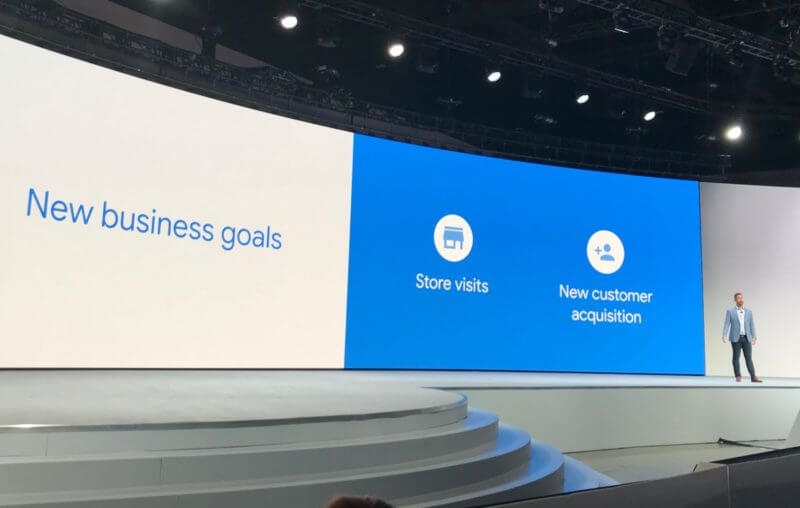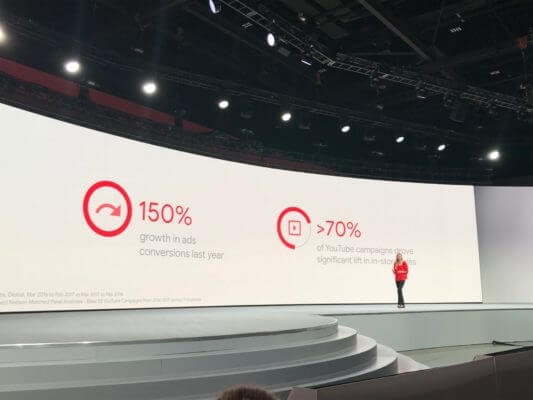Google Marketing Live: Here come fully automated ads & campaigns for Local, Shopping & more
Google announces machine learning-loaded initiatives at its annual advertiser event.
During the livestreamed keynote at Google Marketing Live in San Jose, California, on Tuesday, Google executives announced several initiatives, all of which are powered by machine learning and take automation to another level.
It’s easy to start being glib about yet more mentions of artificial intelligence and machine learning, as just about every product or feature release from Google Ads (the new brand name for AdWords that will be rolling out this month) and Bing Ads over the past year or so has had machine learning behind it. However, we’re entering into a new, more automated phase.
No longer is automation limited to certain aspects of campaign management — such as bidding or dynamic headlines. Now, every facet of a campaign — bidding, creative and targeting — can be automated based on a few inputs from the advertiser.
First there were Dynamic search ads, now there are Responsive search ads. First there were Universal App Campaigns, now there are Local Campaigns. These new campaign types also deliver ads across Google’s broad swath of ad inventory: Search, YouTube, Display, Apps, Maps and so on. A big part of the Google Ads rebranding, after all, was to more clearly put all of those properties under one umbrella.
Here’s the rundown of Tuesday’s announcements.
Responsive search ads
We first reported on the Responsive search ads beta in May. Google says this new ad type, which automates ad testing and gives more real estate to advertisers willing to turn testing over to Google’s algorithm, will roll out to all advertisers over the next few months.
For more than a year now, Google has been pushing advertisers to give up manual A/B testing and add at least three ads per ad group and has also made it harder for advertisers to resist choosing automated ad rotation. Several studies have shown advertisers have been slow to put the work into creating and adding more ads to their ad groups, or they prefer to manually test creatives.
Responsive search ads kick in more characters as an incentive to try them. Advertisers can enter as many as 15 headlines and four descriptions, which can be up to 90 characters instead of 80. In the search results, Responsive search ads can show as many as three headlines, instead of two, and up to two 90-character descriptions instead of one 80-character description.
Google automatically serves the combination deemed to most closely match the user’s search query. The more varied the inputs, the more opportunities the ad group has to enter auctions related to the keywords used in those inputs.
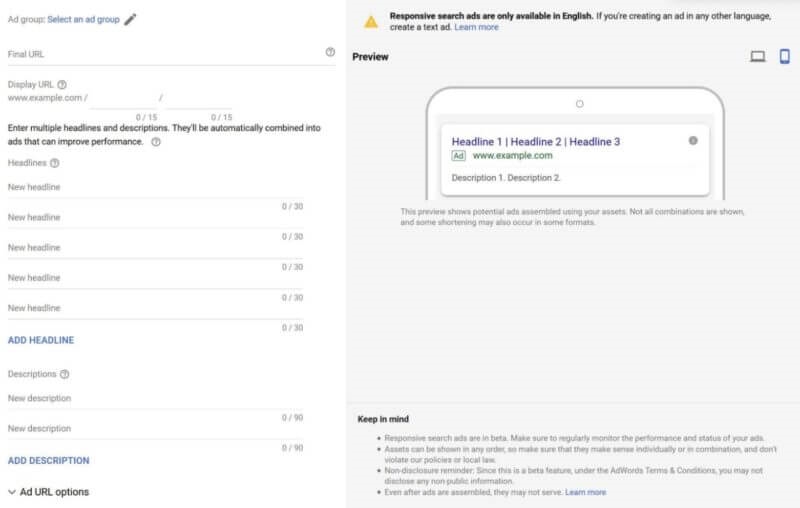
More advertisers will be able to set up Responsive search ads available in the Google Ads UI over the next several months.
The agency iProspect is among those that have been testing Responsive search ads with clients. “We continue to see evolutions in Google’s advertising platform that lend themselves to further automation, and Google’s Responsive Search Ads is just that. This tool furthers advertisers’ abilities to create relevance at scale in the SERP by automating part of the ad development process,” Jessie Dearien, VP, head of paid search at iProspect, tells Search Engine Land. “iProspect’s clients are seeing strong positive responses across the board, even reaching CTR improvements of +20 percent, and correspondingly lower CPC (up to 17 percent less expensive). Google’s commitment to continually evolving their toolset provides new, powerful solutions for advertisers who lean into the changes.”
Local campaigns
We know “near me” searches have been rising dramatically with mobile. In his opening remarks, Google’s head of ads, Sridhar Ramaswamy, shared that the search engine has seen a 10x increase in the number of searches including the phrase “open near me tonight.”
A new campaign type called Local campaigns is aimed at driving store visits. Advertisers set a budget, and the ads are generated automatically based on ad creative elements from the advertiser and location extensions. Google automatically optimizes ad delivery across Search, YouTube, Maps and websites and apps in its ad networks.
The use of machine learning and automated delivery across Google properties is similar to the Smart Campaigns type introduced for small businesses a couple of weeks ago.
However, with Local campaigns, the goal is strictly to drive traffic to stores from the ads, and they aren’t designed specifically for SMB, as are Smart Campaigns. Local campaigns report on store visits using anonymized and aggregated data from signed-in Google users who have opted to turn location history on.
Local campaigns will be available globally over the next few months.
Store visits measurement, once available only to the largest of brick-and-mortar chains, is becoming increasingly accessible as Google keeps building out its mapping measurement capabilities in this area. Earlier this week, we reported on the availability of per-store reporting. Why the big focus on store visits? Some 90 percent of purchases still happen offline, and Google shared another stat at the event: 80 percent of Americans are shopping at any given time within a 48-hour period. That means a lot of demand from advertisers who want to be able to capture and measure those shopping “moments,” to use Google’s favored keyphrase.
Smart Shopping campaign goals & Shopify
Google announced goal-optimized Shopping campaigns in May — what it’s now calling Smart Shopping campaigns. The campaigns automatically optimize ad delivery across Google’s properties and ad networks to achieve the advertiser’s defined conversion goal value, such as revenue or return on ad spend (ROAS).
On Tuesday, Google announced advertisers will also be able to select store visits or new customers as goals.
Bids and delivery are adjusted automatically based on the determined likelihood that an ad click will result in the advertiser’s stated goal.
Google is also teaming up with third-party e-commerce platforms. To start, Shopify users will be able to set up Smart Shopping campaigns from within Shopify.
YouTube Brand Lift
Advertisers will be able to set a new Smart Bidding strategy, Maximize Lift, for YouTube campaigns to optimize delivery to users who are most likely to consider a brand after seeing a video ad. Maximize Lift will be available later this year.
YouTube product manager for monetization, Nicky Retke, shared that YouTube saw 150 percent growth in ad conversions last year and a study of 55 YouTube campaigns measured across 9 countries found that more than 70 percent of them drove significant lift in in-store sales.
Other Announcements
Hotel ads
Hotel ads are getting integrated into the Google Ads platform so advertisers will be able to access these campaigns from the same place as everything else. Google did the same for YouTube several years ago, and the integration makes even more sense given the Google Ads rebranding.
Cross-device reporting & remarketing in Google Analytics
The announcement that drew the biggest reaction from the audience in San Jose was news that advertisers are now able to see cross-device reporting in Google Analytics for the first time, which also means they can build and deploy cross-device remarketing audiences to use in Google Ads (see second tweet below).
[Article on our sister site Search Engine Land.]
Marketing Land – Internet Marketing News, Strategies & Tips
(11)

